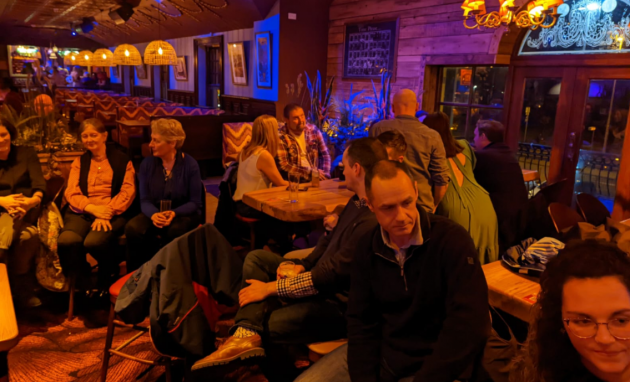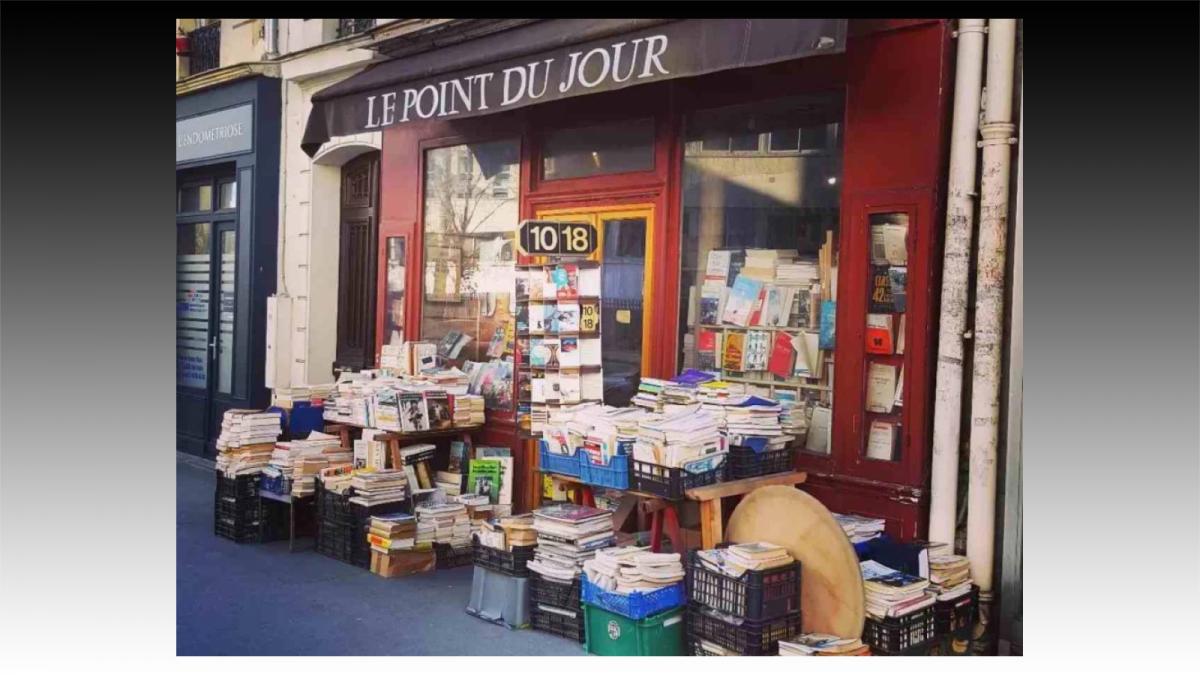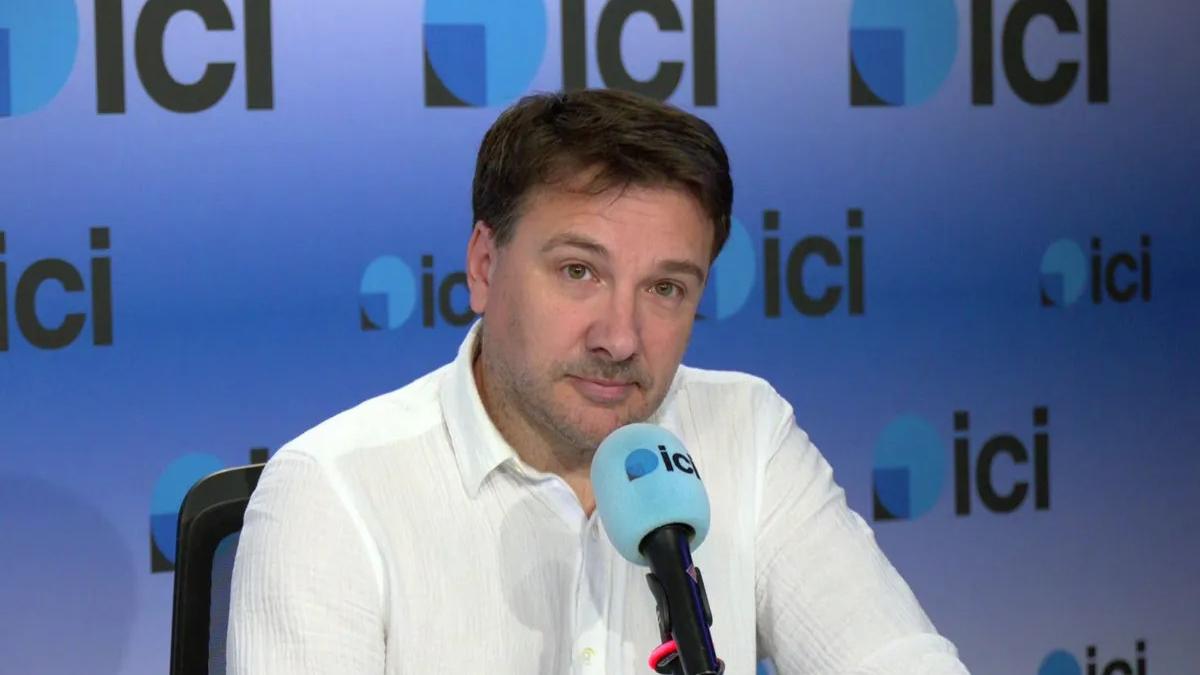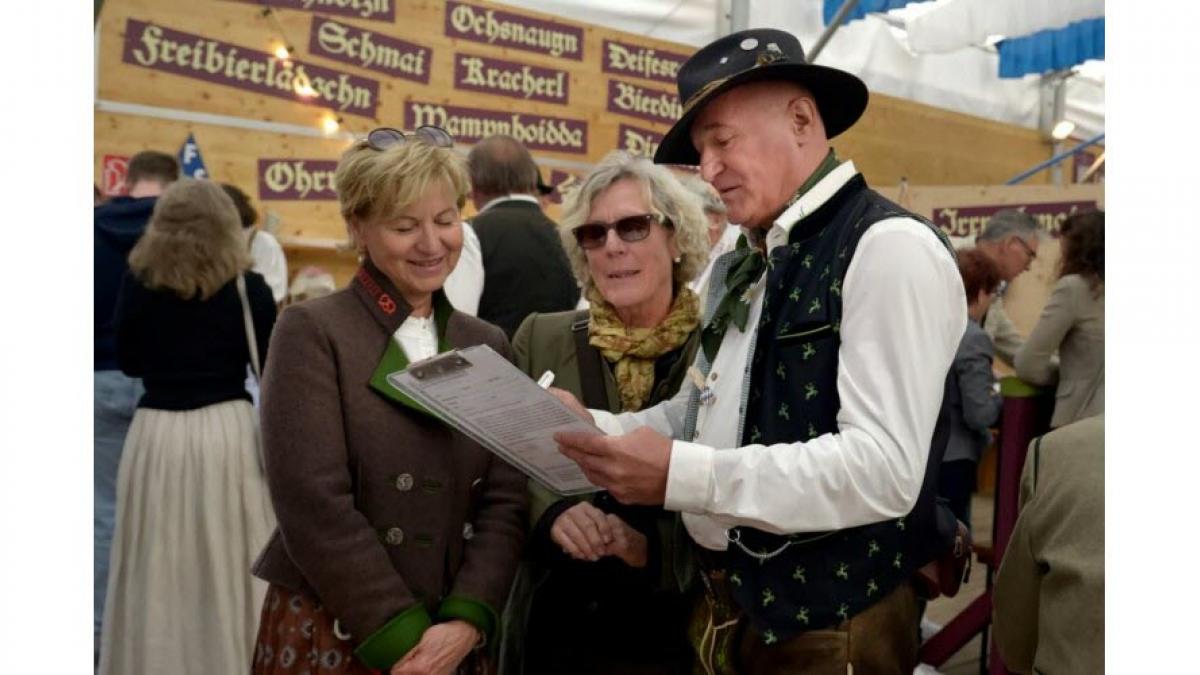There are plans for an Irish Language Quarter in Dublin. How would it work?
Ronan Duffy ("TheJournal.ie")

The capital has a large community of Irish speakers and there are efforts to harness this.
THE LAST CENSUS recorded that 72% of people who spoke Irish on a daily basis lived outside of Gaeltacht areas.
In relation to their size (just 2% of Ireland’s population), Gaeltacht areas of course account for an outsized proportion of daily Irish speakers, but the majority being from elsewhere shows there’s no one-size-fits-all approach to the Irish language.
Nowhere is that more clear than in Dublin, where there is to be a determined focus to both increase the number of Irish speakers in the capital and cater for those already there.
About 16,000 people in Dublin use Irish on a daily basis, a not insignificant number, but surveys clearly show a strong appetite for more visibility of the language.
A survey by Dublin City Council from February found that 69% of people would like to see more Irish in the city, with a strong 74% saying they would like more opportunities to learn the language in Dublin.
Earlier this year, funding of €325,000 was approved for new project called BÁC le Gaeilge. The plan is focused on Irish in the capital with the government pointing out that there is a large community of speakers already built up from gaelscoileanna.
The plan seeks to encourage businesses to use Irish in signage and advertising, to develop an Irish language business network and to use Conradh na Gaeilge’s HQ at 6 Harcourt St as “a centre for businesses and the public”.
6 Harcourt Street has one of the most interesting histories in the capital having been home to a Unionist MP and Irish revolutionaries, seeing action in 1916 and housing Michael Collins’ office as Minister for Finance.
Perhaps most ambitiously, the BÁC le Gaeilge project wants to develop an Irish Language Quarter in the city, likely around this Harcourt St base.
Mícheál Ó Nualláin, who is manager of BÁC le Gaeilge, told The Journal that they want to approach the project “with a businesses eye” so that businesses can improve their bottom line by making an effort to provide Irish language services.
“Although it’s niche number in the city with about 16,000 daily speakers, they all say that they would be loyal to a brand or a company that had Irish and that they’d come back. So that’s probably a niche market that no one ever thought of.
As well as that, we want to develop an Irish language network among those doing business. BÁC le Gaeilge, we’ve just been going since the start of the year but we’re based on Gaillimh le Gaeilge, which was the first of these and started in the 1980s.
“What they do brilliantly is they have a language network amongst businesses within Galway city. They meet once a month and it’s just a great networking experience.”
Ó Nualláin mentions Borradh, an online network of business people that was set up in early 2020 by senior professionals in companies like Accenture, IBM and Indeed.
The idea was to connect professionals working in Dublin, with Ó Nualláin understandably describing it as a “LinkedIn as Ghaeilge”.
Unfortunately they started in February 2020 with their first event but they did brilliantly well. A lot of really high functioning people with gaeilge and who deal with big corporations, networking together and getting them all involved with business.
“We are grassroots here and we’re trying to get people just buy into Irish, using the cúpla focail, so there’s probably a way of marrying the two.”
Ó Nualláin says there are of course “a lot of challenges” for firms that seek to do business through Irish. A simple example is the churn of staff, with a business that relies on an Irish speaker or speakers perhaps more exposed if those staff members left.
He says creating a community would help alleviate those problems, with the ambitious target of the Irish Language Quarter potentially serving as a hub for Irish language startups.
We’re looking to make a professional manner of it as well, so that’s why I brought Borradh into the equation. So we could probably have hot desks around for anyone who wishes to work in Irish in this quarter, it’s about immersing businesses in trade and with day-to-day running.
Feeling sociable
The idea of an Irish language quarter is a headline-grabbing one, but versions of this have been achieved on a smaller scale before.
The current Mayor of South Dublin County Council Peter Kavanagh has long been an advocate of the Irish language in the capital and has been behind the successful Pop Up Gaeltacht events that have been running for some years.
The events essentially see a network of Irish speakers descend on a certain pub on a given night and drink and chat through Irish.

The organised events didn’t happen remotely during the past few years but they’re back now, with one at the Cobblestone last month and another this week on Dublin’s Francis Street.
“We had a two-year hiatus because of Covid; we felt that there was no way we’d be able to operate a Pop Up Gaeltacht under the kind of restrictions that were imposed over the last two years. The idea of booking a table and staying at the one table and not mingling and meeting new people, that was anathema to us,” Kavanagh says.
The independent councillor is excited about an Irish Language Quarter, but says it must be done in a way that’s about more than just a few shops displaying Irish signage.
Fundamentally, what’s the philosophy behind it? Are you buying into this idea that people who speak Irish or who want to speak Irish are hobbyists? In which case, okay, give us a theatre, or a gallery or a cafe and thanks very much we’ll leave it there. Or are you looking realistically at what the actual picture is? Which is the people who want to live their lives as much as possible through Irish – it’s not the majority, but a significant enough number to do something.
He adds: “At the moment, businesses are actively discouraged from doing things through Irish, simply because their interactions with the State are forced into English.”
Part of the government’s 20-year strategy for the language is that 20% of new civil service hires by 2030 would be Irish speakers. The thinking behind that is that people will have a greater chance of accessing State services in the language.
Kavanagh says it’s “a step in the right direction” but he questions whether it will actually mean seamless dealings for Irish-language businesses.
Realistically, when you pull the numbers apart that’s a drop in the ocean, there still won’t be a guarantee that if I want to set up a business and I ring Revenue to get my tax affairs in order that I’ll be able to access the service through Irish on the day.
Echoing some of Ó Nualláin’s business-focused vision for the Irish Language Quarter, Kavanagh says that ideally it should include an office block where “Irish is the language of commerce”.
If workers want to go to a GP, for example, he says healthcare provision through Irish should be available.
This is something that BÁC le Gaeilge is looking at, with Ó Nualláin saying that even if their Irish isn’t perfect, service providers should be encouraged to use it.
“It’s about giving the people who want to speak Irish an opportunity to use those services, that’s kind of where we fit in, like GPs, and we’re looking at dentistry too. Theoretically they should have an honours Irish degree, in the Leaving Cert at least. So it gets people to brush up on their cúpla focail – we’re not looking for fully fluent services here, little bits and nuggets of Irish. ”
This work is co-funded by Journal Media and a grant programme from the European Parliament. Any opinions or conclusions expressed in this work is the author’s own. The European Parliament has no involvement in nor responsibility for the editorial content published by the project. For more information, see here.
- Se connecter ou s'inscrire pour publier un commentaire
- 29 vues
Connexion utilisateur
Dans la même rubrique
Mustafa Benfodil ("El Watan.dz")
14/12/2025 - 10:42
Yves Tusseau
04/12/2025 - 11:09
Julien Steinhauser
02/12/2025 - 19:47
Commentaires récents
Didier Laguerre (PPM) lance sa campagne électorale
Albè, je souscris complètement à l’analyse sise...
Frédéric C.
24/12/2025 - 10:29
...derrière votre commentaire. Collectivement, nous sommes encore en plein "colorisme". Lire la suite
Didier Laguerre (PPM) lance sa campagne électorale
ABCX, vous semblez confirmer donc ce que...
Frédéric C.
24/12/2025 - 10:12
...j’avais gardé comme souvenirs de cette campagne, qqch de pas très propre. Lire la suite
Didier Laguerre (PPM) lance sa campagne électorale
RIEN DE NOUVEAU SOUS LE SOLEIL
Albè
24/12/2025 - 09:49
Quand Césaire avait eu le choix entre Lise et Letchimy pour lui succéder à la mairie de FDF, des Lire la suite
Didier Laguerre (PPM) lance sa campagne électorale
gag
abcx
23/12/2025 - 19:02
La honteuse effigie avait été accrochée pendant toute la campagne électorale au 2ème étage d'un i Lire la suite
Didier Laguerre (PPM) lance sa campagne électorale
Wi, Véyative, j’ai entendu ça...
Frédéric C.
23/12/2025 - 16:20
...quelque part! Lire la suite
Top 5 des articles
Aujourd'hui :
- La Guadeloupe et Martinique dans le top 10 mondial des ventes de voitures neuves
- « Man sé an négrès Ibo » : subversion coloniale et affirmation identitaire.
- Ce roman français rocambolesque d’une autrice réunionnaise vient d’être élu parmi les meilleurs livres 2025 du New York Times (c’est une première historique !)
- Patriyot #151 Décembre 2025
- Didier Laguerre (PPM) lance sa campagne électorale
Depuis toujours :
- Tous les présidents et premiers ministres de la Caraïbe sont vaccinés
- L'intolérable appauvrissement intellectuel et culturel de la Guadeloupe et dans une moindre mesure de la Martinique !
- LETTRE OUVERTE AU 31ème PREFET FRANCAIS DE MARTINIQUE
- L'arrière-grand-père maternel de Joan Bardella était...algérien
- Les triplement vaccinés contre le covid ne bandent plus





